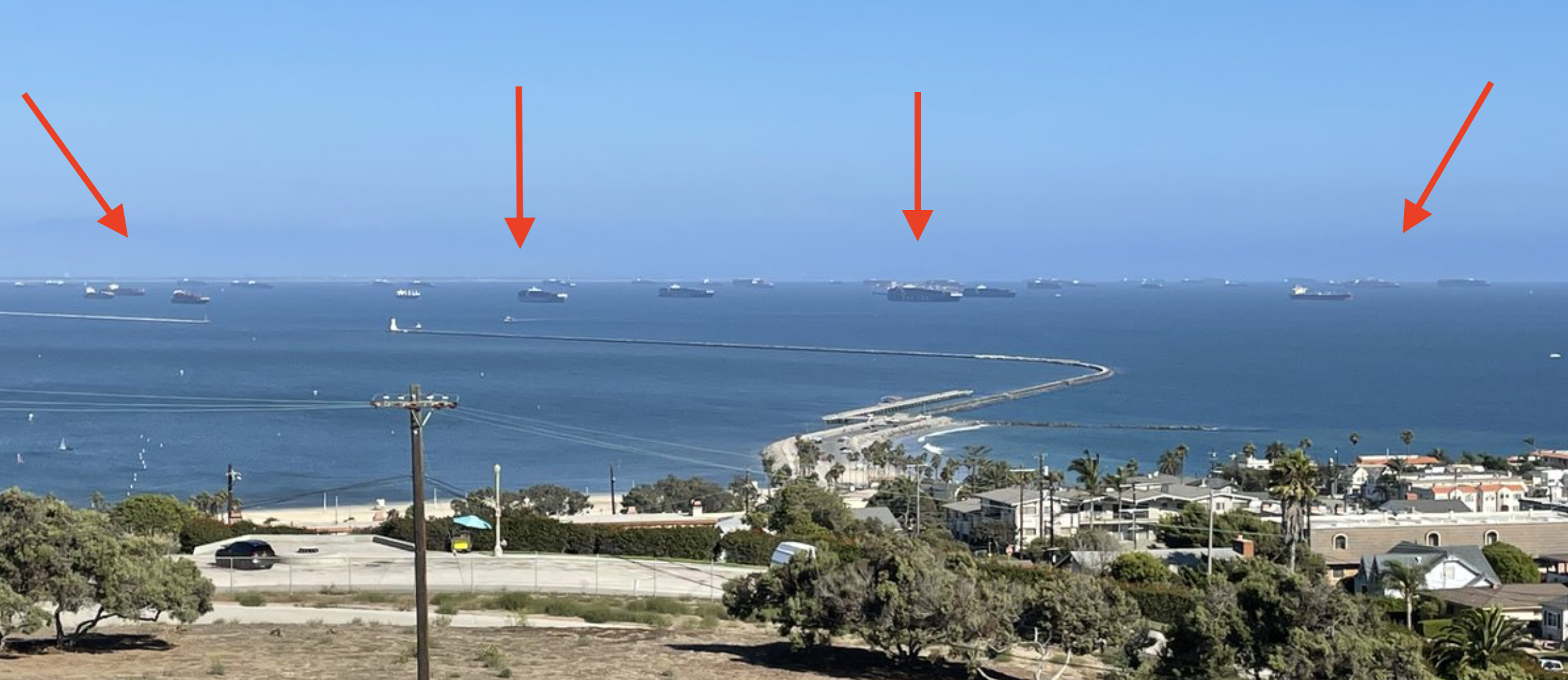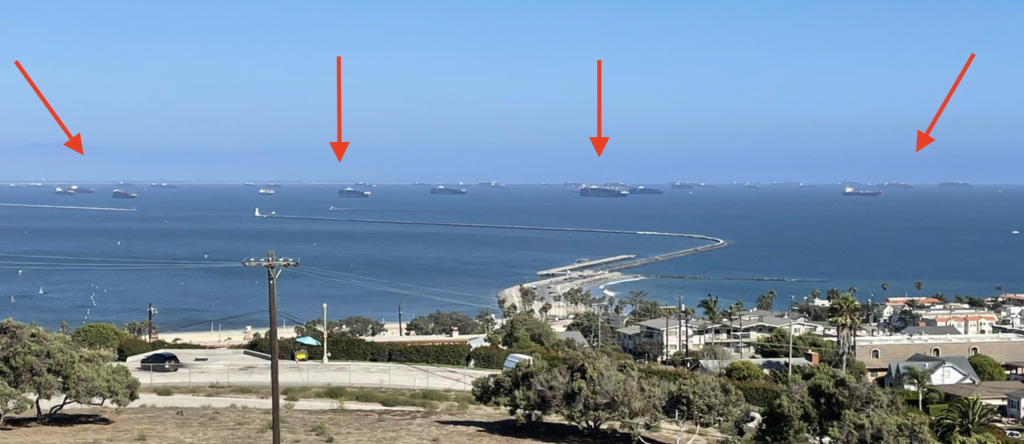
- Ports in Los Angeles and Long Beach hit multiple new records nearly every day last week.
- The queue of ships waiting to unload lengthened by 10 ships last week.
- The average time it takes to transport a package from Asia to the US has increased over 43% since last year.
- See more stories on Insider's business page.
The Southern California ports that are responsible for almost half of all US imports hit a new record nearly every day last week.
Over the past week, the queue of ships waiting to unload at the ports in Los Angeles and Long Beach have lengthened by 10 ships. On Friday, the ports had 65 cargo ships stuck at anchor or in drift areas waiting for spots to open up to dock and unload. The ports, which are a primary thoroughfare for key imports between Asia and the US, had 147 ships in the locations, including 95 hulking cargo ships on Friday – both new records.
The average wait time for the vessels is about 8.7 days – about 2.5 days longer than the same time the month before, according to LA port data. So far, the ports have handled about 862,000 imports in 2021.
The locations hit new records for the number of ships in the port, as well as the number of container ships waiting to undock every day last week, except Thursday, as the Marine Exchange of Southern California did not provide a shipping report for that day. The group has not responded to a request from Insider as to whether the ports hit a record on September 16 as well.
The ports have hit six new records in less than four weeks as shipping delays continue to surge past early pandemic levels. When the ports hit an all-time high in late August, it was the first time since February, when the onset of pandemic shutdowns and the panic-buying frenzy wreaked havoc on global supply chains.
"The normal number of container ships at anchor is between zero and one," Kip Louttit, the executive director of the Marine Exchange of Southern California, told Insider in July.
Freightos told Bloomberg that the average time it takes for ocean freight to go door-to-door has increased 43% over the last year, from 50 days to 71.5 days.
At the same time, shipping costs have skyrocketed. Last week, the Head of Research at Freightos Judah Levine told Insider the price for transporting a 40-foot container between the US and Asia jumped 500% from this time last year to $20,586.
Ultimately, the ports are facing backlogs as a result of COVID-19 disruptions and a labor shortage paired with spikes in demand.
Executives have warned that rising transportation costs will increase shortages of goods, as well as necessitate more price hikes. Last week, UPS president Scott Price said the company anticipates supply-chain snags will continue through 2022.
Meanwhile, many companies have already begun raising their prices to offset the transportation costs.
"When we see these massive increases in transportation costs, it's clear somebody will have to pay for it," Douglas Kent, the Executive Vice President of Strategy and Alliances at the Association for Supply Chain Management (ASCM), told Insider. "One more disruption could send it [the global supply chain] into complete chaos."

